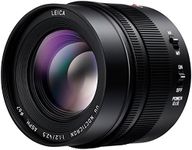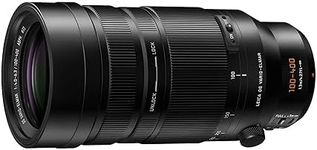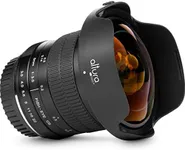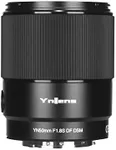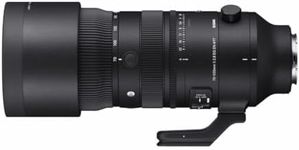Buying Guide for the Best Camera Lenses
Choosing the right camera lens can significantly impact the quality of your photos and your overall photography experience. The right lens depends on what you plan to shoot, your camera type, and your personal preferences. Understanding the key specifications of camera lenses will help you make an informed decision and ensure you get the best lens for your needs.Focal LengthFocal length is the distance between the lens and the image sensor when the subject is in focus. It is usually measured in millimeters (mm) and determines the lens's field of view. A shorter focal length (e.g., 18mm) offers a wider angle of view, ideal for landscapes and architecture. A longer focal length (e.g., 200mm) provides a narrower field of view, suitable for wildlife and sports photography. Choose a focal length based on the type of photography you are interested in.
ApertureAperture refers to the opening in a lens through which light passes to enter the camera. It is expressed as an f-number (e.g., f/1.8). A lower f-number means a larger aperture, allowing more light to hit the sensor, which is great for low-light conditions and achieving a shallow depth of field (blurry background). Higher f-numbers mean smaller apertures, suitable for well-lit conditions and greater depth of field. Consider your shooting environment and desired depth of field when choosing the aperture.
Lens MountThe lens mount is the interface between the camera body and the lens. Different camera brands and models have different mounts, so it's crucial to ensure compatibility. For example, a lens designed for a Canon camera won't fit a Nikon camera. Check your camera's specifications to determine the compatible lens mount and choose accordingly.
Image StabilizationImage stabilization (IS) helps reduce the blur caused by camera shake, especially at slower shutter speeds or longer focal lengths. This feature is particularly useful for handheld shooting in low light or when using telephoto lenses. If you often shoot in such conditions, look for lenses with built-in image stabilization.
AutofocusAutofocus (AF) is the lens's ability to automatically focus on the subject. Fast and accurate autofocus is essential for capturing sharp images, especially in action or wildlife photography. Some lenses offer advanced AF systems with multiple focus points and tracking capabilities. Consider your need for speed and precision when evaluating autofocus performance.
Lens Elements and CoatingsLens elements and coatings are designed to reduce optical imperfections like chromatic aberration, flare, and ghosting. High-quality lenses often have multiple elements and special coatings to enhance image clarity and color accuracy. If you prioritize image quality, look for lenses with advanced optical designs and coatings.
Weight and SizeThe weight and size of a lens can affect your comfort and mobility, especially during long shooting sessions or travel. Larger, heavier lenses may offer better performance but can be cumbersome to carry. Consider how often you'll be carrying the lens and your comfort level when choosing the size and weight.
Prime vs. Zoom LensesPrime lenses have a fixed focal length, offering superior image quality, wider apertures, and lighter weight. Zoom lenses offer variable focal lengths, providing versatility and convenience. If you need flexibility and convenience, a zoom lens might be the best choice. If you prioritize image quality and low-light performance, consider a prime lens.





